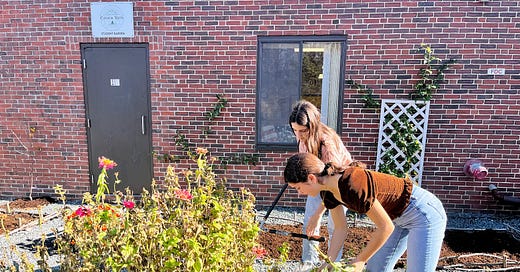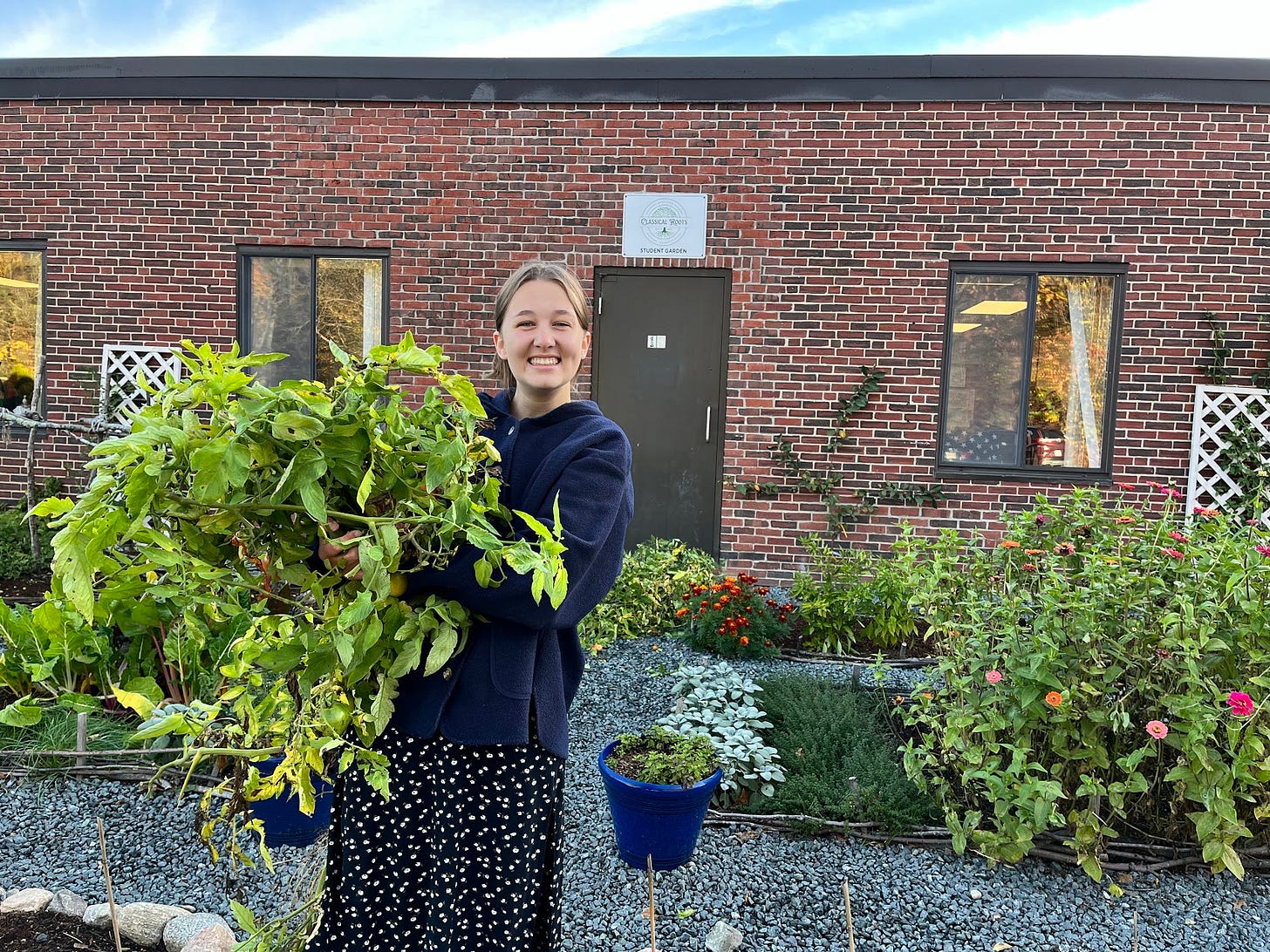Winterizing
The brown rectangles of the empty beads gleam up at you with the luster of blank canvas. Next spring, you will begin to paint again.
There is something satisfying in the clean lines of a winterized garden. After the first hard frost has knocked back all the herbaceous plants in a bed, reducing them to piles of soggy lettuce, and the wreckage has been clipped down and carted off to the compost heap, the brown rectangles of the empty beads gleam up at you with the luster of blank canvas. Next spring, you will begin to paint again.
Given the long, warm fall we’ve been enjoying, the students and I have been taking this process in easy stages. Every Monday for weeks, I came to campus braced for the somewhat mournful task of cutting down the tomatoes. But, despite the relatively cooler nights, the tomatoes kept producing in abundance right through the beginning of November; a miracle partly due to the micro-climate we accidentally created in the garden’s making. A west-facing brick wall is probably the best imaginable situation for a plant: neither too sunny nor too shady, warmed by the afternoon light and watered regularly by rain that splashes right up against the wall itself. Surrounding the beds with gravel paths did no harm to them either: the heat lingers in the stones for hours after sundown, giving plants like tomatoes just the boost they need.
Nevertheless, there has still been plenty to do: taking down the teepees of bean poles we cut out of local underbrush last spring, composting kale that has been colonized by aphids, and pulling out the beets that have finally ripened into plump, scarlet readiness. The season of harvest has been long and, along with the physical bounty of vegetables, the students have been gleaning new knowledge about how to make a garden ready for the superlative harshness of a New England winter, which always arrives in force, even when it arrives late.
Most of the time, the thing to do with a spent veggie bed is to cut everything off at the ground, leaving the roots in the earth to decompose overwinter and improve the structure of the soil. Once the plants have been cleared away, it is time to take a hoe and hack the bed into clumps, opening up the soil to the air and allowing the elements to break it down, re-smoothing it over the coming months. As with many worthwhile things in life, one of the most important things we can do with gardens is to periodically leave them alone: nature needs time to reset and, if we are willing not to fiddle with the earth, it will be breeding life for us underground all winter long.
Yet there are a few garden-adjacent dilemmas that arise at this time of year that demand our attention. One of them has to do with the time-honored practice of raking up any leaves that have fallen on our yards and garden beds. While it’s lovely to see a crisp green sward staring up at you after a long day of raking, scientists are becoming increasingly aware of the staggering array of life that fallen leaves support when left alone. Moths, butterflies, and many other species overwinter in leaf litter. Not only that, but almost all leaves will decompose naturally by late spring, adding nutrients and depth to the soil that is equal to the benefits of any fertilizer. As we tidy up our lawns and borders for the winter, it is well worth considering leaving at least some of the leaves where they lay.
A related issue is the question of leaving the stems and seed heads of perennial flowers and plants uncut. These can provide necessary shelter, warmth, and food (in the form of seeds) to many species when we leave them standing over winter, not to mention adding moody structure to our gardens. There are few things as hauntingly pretty as the black seed heads of old flowers draped in new snow. If you plant such flowers in your gardens and haven’t tried leaving them standing during the winter months, it’s well worth a trial run. If you hate the look of it, you can always cut them back mid-winter. If you love them, as I do, you can wait to cut them back until very early spring.
All of these negotiations are part of the process of providing space for the living things that share our ecology, an act of stewardship that honors those animals and organisms that spend the winter with us. And luckily, as one of my students observed, we can often benefit those creatures most by doing slightly less work, rather than slightly more. So neglect becomes our ally.






